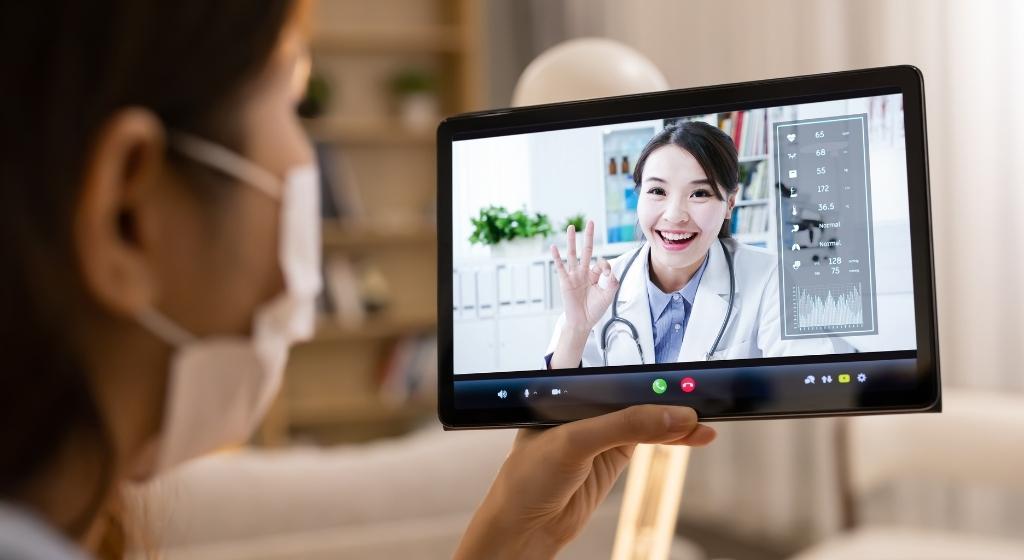In this blog post, we will talk to you about the future market and the areas in which ultra-low latency streaming is used with WebRTC.
Video content has been getting a lot of love these past couple of years. Some of it is just for fun, but businesses are learning to rely on video to help them attract and engage an audience. It shouldn’t surprise you that there’s a need for faster, better, and more immediate video.
What is ultra-low latency?
In live streaming, low latency critically influences the sense of immediacy of the video. Some types of live streams might need it more than others, but it’s still one of the key technical characteristics you need to understand about live streaming. So let’s see what ultra-Low latency Streaming is, when you need it, and how to achieve it.
In other words, latency is the term given to the speed and consistency of real-time video streaming. In specific terms, it represents the delay between the video or content being produced, and the delivery of that content to the viewers’ streaming device.
The ‘ideal’ latency depends largely on the type of content being streamed and viewed.
Nowadays, you need ultra-low latency streaming products when it comes to your live streaming video application or various service. If you are a player looking for help in passing the level; hosting an online auction; or if you’re video chatting with a friend around the world, you need a stream in real-time as quickly as possible without the need for delays, and buffers or dropouts.
Ultra-Low Latency/WebRTC Streaming Market Forecast 2020 – 2027
Ant Media Server provides ultra-low latency streaming using WebRTC protocol. The WebRTC protocol is preferred because it provides ultra-low latency in many areas. According to research, the global market was valued at $3.2 billion in 2020 and is projected to reach $40.6 billion by 2027, growing at a CAGR of 43.4% from 2020 to 2027. The global demand for WebRTC is expected to rise, largely due to a rise in its application in end-use sectors such as telecom, IT, e-commerce, and others.
The smartphones & tablets segment accounted for the highest market share of 73.57% in 2019 and will retain the dominant position throughout the forecast years. The reason for this percentage is the increase in smartphone usage. The mobile segment is expected to expand at a significant growth rate during the forecast period. This is due to a rise in smartphone penetration and the preference of end-users for mobile platforms. one of the other important sectors is health. Health care is anticipated to be a rapidly expanding segment of the market. It is expected to expand at a CAGR of %21.9 during the forecast period.
Furthermore, in the health care industry, Patients and doctors are adopting WebRTC solutions in order to reduce their commute to the hospital also to improve mobility and device support. WebRTC solutions allow doctors and hospital staff to use collaboration suites everywhere to virtually treat patients. Additionally, WebRTC solutions provide customers with a click-to-call solution, which helps connect doctors and hospitals with patients. WebRTC solutions could be the first step in implementing a full electronic health system that can bring the doctor home.
In addition, in the end-user sense, the telecommunications industry dominates the WebRTC market. The Internet and app ecosystem have already driven disruption with VoIP, IM, and social networks taking consumer mindshare. WebRTC has brought bigger opportunities for the telecom industry. Traditional telecom players are confused about reviewing obsolete business models and developing communications services and applications that meet real human needs. Media and entertainment, and others (energy and transportation) segments are also estimated to expand during the forecast period.
Why is WebRTC usage on the rise?
WebRTC technology provides a cost advantage
WebRTC is completely free. WebRTC solutions do not require additional plug-ins or software to be installed. WebRTC allows browser-based applications to deliver real-time user experiences. In addition, it provides secure communication over the web with lower costs and high benefits such as easy deployment between various operating systems and different device types, and others.
Webification of real-time communications
The “webification” of real-time communication (RTC) represents communications embedded in web pages and makes them accessible from any screen. This is increasingly observed in various applications that allow real-time audio/video communication between two browsing windows without requiring additional plug-ins such as Flash, Java, or others. Embedding RTC into web applications helps deliver a richer and better user experience by making online interactions more human. Developers, including those of sophisticated software that powers major business processes, are taking note of this trend and starting to capitalize on its benefits. WebRTC allows web developers to develop applications that include voice, video, chat, and data collaboration without the need for voice or telecommunications over IP.
Let’s take a look at the ultra-low latency WebRTC streaming usage areas.
When is Ultra Low Latency WebRTC Streaming Especially Required?
Let us look at the areas of live video streaming that are most affected by latency, and will benefit the most from ultra-low latency streaming solutions:
Education

Online Gaming

Auction Participation
When taking part in a live auction, users require ultra-low latency to ensure they can keep up with the bidding.
Live Events

Video Conferencing
This type of interactive viewing must achieve low or ultra-low latency streaming to be viable and inclusive so that remote contributions are in time with live events being discussed, or debated. This also applies to the online live chat scenario.
Any type of interactive online viewing platform, including the provision of tutorials, will strive for ultra-low latency streaming to ensure seamless interaction with a minimal delay that is unnoticeable to the viewer.
Live Shopping
Live commerce brings e-commerce into the future with live video events, combining in-store shopping experiences with online convenience. For example, a store employee might present a live product demonstration or even try the product. With live interactive video streaming, customers can interact, comment and even ask questions directly to the broadcaster. Viewers who get the necessary information in the live stream can make purchases during the broadcast and return to the broadcast later.
The live shopping experience is designed to offer an in-store shopping experience online. The stream can contain links to product information and many other features that will benefit viewers. It combines the best aspects of the in-store experience with the ease, convenience, and speed of the live shopping experience.
Telehealth
Telehealth is a modern way of delivering healthcare services to patients. The Health Resources Services Administration describes telehealth as the use of electronic information and telecommunications technologies to support clinical health care, patient and professional health-related education, public health, and health administration. According to some reports, the telehealth market will reach around $20 billion by 2026.
Example benefits of telehealth in surgery
- Pre-op assessments provided via telehealth are accurate, prevent patients from having to visit the hospital, and reduce complications during surgery.
- Post-op wound checks via telehealth reduce the need for patients to travel to the hospital for in-person checks.
- Post-surgical follow-ups via telehealth are correlated with quicker adjustment to medications, better medication adherence, and lower systolic blood pressure.
Digital Fitness
Fitness is no longer only an activity that is made in the gym. People want to work out whenever and wherever they are available. Ultra low latency video streaming technologies are gaining importance here. An interactive online fitness experience will work just as well as in the gym and be enjoyable.
As providers of streaming services introduce more multi-protocol technologies, tools, and applications, the industry is beginning to see the emergence of more Ultra-Low Latency Streaming solutions.
Make check to read our ultra-low latency streaming uses cases blog post.









